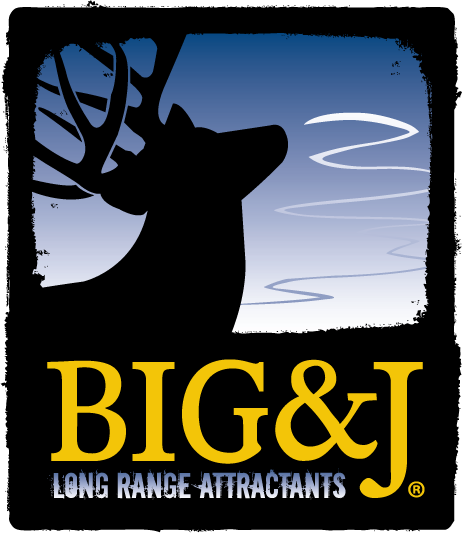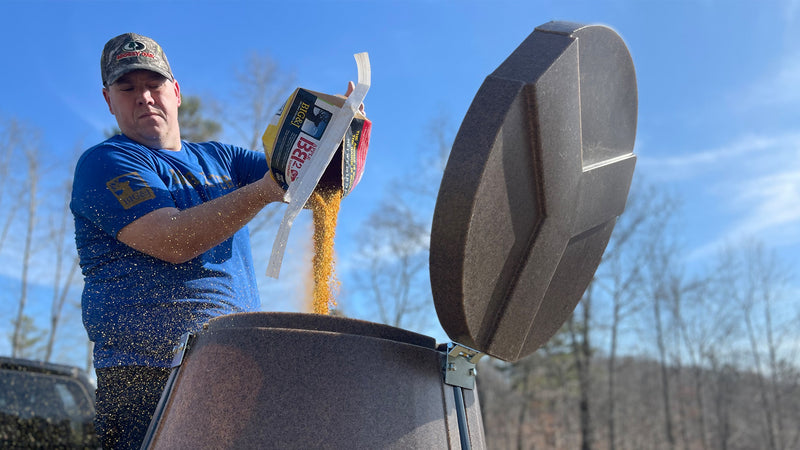By Heath Wood
Many deer hunters have realized that managing their herd will produce healthier does and grow bigger bucks. The obsession with feeding and managing deer is another stepping block that coincides with a passion for hunting. Hunters know that proper care of deer is needed to improve the quality of the hunt. However, using minerals, salts and supplemental feeds is not as easy as pouring out a couple of bags of corn, throwing out some salt and watching the bucks grow. To make a true impact on the quality of deer as a whole herd and to grow bigger bucks, one must first learn what deer genuinely need, the best times to use supplements and have a proper understanding of what they are pouring out for the deer.
To help hunters understand what is needed and what Big and J products are best, I sat down with Will Griffin, a Ph.D. Nutritionists to help shine the light on product knowledge and the overall health of deer.
BB2

When hunters hear Big and J, they most likely think of the product BB2. “BB2 is an attractant that can be used as a supplemental source and is a great source of protein and energy,” explained Griffin. BB2 is a better source of supplemental feed because of its higher energy content than corn and BB2 is a fiber-based product. The importance of BB2 being a fiber-based product is that no matter how much they eat, there will be no digestive problems, as they would when consuming too much corn. No digestive issues equal healthier deer. Energy and protein are vital for the does’ bodies to reproduce. For bucks, protein is what is needed for antler growth.
The great thing about BB2 is that it is a year-round product that can help fill the gaps of protein and energy when deer lack it in their natural habitats. “Deer need a diet of about 16% protein on average,” said Griffin. “When tested, BB2 runs an average of 20% protein.” When deer consume BB2, they quickly realize that what they are consuming is power-packed with energy and protein. The need for the nutritional value that BB2 produces keeps deer returning often. Griffin described why corn could be harmful if a deer severely damages their digestive system. The deer could become unable to absorb nutrients, resulting in unhealthy deer. “When deer eat too much of a starch-based product, they generate too much acid in their stomach, which generates what is called acidosis, which causes damage to their digestive system.”
Headrush/ Dig It Cubes
The most important thing about Headrush is that it is a salt-based product. It is no secret that deer love salt. To ensure that deer consume what they love yet get nutritional value, Big and J made sure to include trace minerals in Headrush. The micro-elements that make up Headrush help deer with immunity and cellular function and create a healthier overall herd.

Headrush is a product to be used yearlong. “Deer are going to consume a salt-based product anytime,” stated Griffin, adding, “When a deer walks by salt, they will take a lick.” Anywhere that “sound nutritional principles” can be squeezed in is good for the health of deer and a step in the right direction. A healthier deer herd is always beneficial whether the hunter is chasing better antler growth or meat on the table. Deer never really stop using salt. When it is hot and deer need more cellular function, they consume a mouth full of Headrush and are good to go. The same goes for the spring and the winter.
A similar product that can be used when deer need a salt-based product is the new Big and J Dig It Cubes. The Dig It Cubes are designed to be used in areas where the hunter can’t freshen up the site as much or for use in front of game cameras to get more photos. Dig It Cubes are also a salt-based product that deer use often. However, they are packed with key trace minerals that deer want and need to remain healthy all year.
Legit

A genuine mineral product is one of the most challenging for hunters to understand. When deer consume minerals, they may only take a couple of licks, which is all they need. When using minerals, hunters often expect to see a large hole in the ground. When they do not see a significant result, they conclude that deer don’t like it. The truth is that deer do not consume minerals as much, thus resulting in slower visible results.
“Legit has calcium, phosphorus, vitamins, and trace elements,” stated Griffin. He explained that hunters need to look at Legit the way we as humans take a multivitamin to help supplement what we need for our bodies. Legit is what Griffin calls the “total package of mineral formulations.”
Compared to other supplements, the difference in Legit is that it has a seasonal use to get the most effective results. When fall arrives, fawns are weaned, and bucks have fully developed antlers, the Legit intake will decrease in most regions. During this time, Legit will not be the preferred supplement of choice. Many native kinds of grass become dormant during this period and produce more beneficial natural nutrition due to the plants not growing and diluting the nutrition. The deer can get what they need naturally.
Griffin said that one of the critical times for bucks to consume minerals found in Legit is directly after the rut. “If it is legal in the state you are hunting, Legit should be used directly after a buck is done rutting.” After the rut, a buck has used every type of energy he has to pursue does to breed. During the rut, a buck only has his mind on breeding and lacks the nutrition needed to remain healthy. “The sooner a buck re-gains the lost nutrition needed, the better his body will be for antler growth the following year, and his overall health will be restored.” Antler growth is a secondary sex characteristic. Any hole in a nutritional restriction that a buck lacks restricts antler growth. The faster he consumes the needed nutrition, the better the antler growth.
Legit should be used beginning after the rut, continued throughout the winter, and into spring and summer until deer get naturally needed nutrition.

